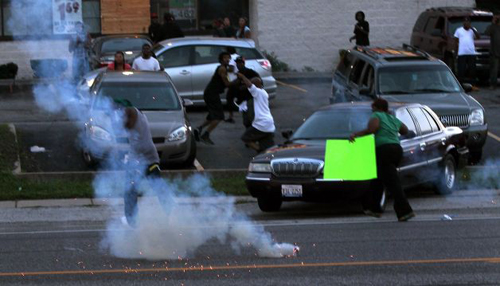 I remember being in college in Washington in 1968 and going to Congressional hearings on the 1967 urban riots (soon to be followed by even more severe ones in 1968). Two sides had lined up; one saying that the riots were caused by urban residents’ lack of respect for the law and others saying that the forces of racism and economic depression combined with the rising expectations of the civil right movement caused young people to vent through rioting.
I remember being in college in Washington in 1968 and going to Congressional hearings on the 1967 urban riots (soon to be followed by even more severe ones in 1968). Two sides had lined up; one saying that the riots were caused by urban residents’ lack of respect for the law and others saying that the forces of racism and economic depression combined with the rising expectations of the civil right movement caused young people to vent through rioting.
On February 29 of 1968, the Report of the National Advisory Commission Civil Disorders (Kerner Report) was published. Included in the summary was:
This is our basic conclusion: Our nation is moving toward two societies, one black, and one white— separate and unequal.
Our principal task is to define that choice and to press for a national resolution.
To pursue our present course will involve the continuing polarization of the American community and, ultimately, the destruction of basic democratic values.
The alternative is not blind repression or capitulation to lawlessness. It is the realization of common opportunities for all within a single society.
This alternative will require a commitment to national action—compassionate, massive and sustained, backed by the resources of the most powerful and the richest nation on this earth. From every American it will require new attitudes, new understanding, and, above all, new will.
The vital needs of the nation must be met; hard choices must be made, and, if necessary, new taxes enacted.
Violence cannot build a better society. Disruption and disorder nourish repression, not justice. They strike at the freedom of every citizen. The community cannot—it will not—tolerate coercion and mob rule.
What has happened in Ferguson, MO has much of the look and feel of what I saw in the 1968 Washington disturbances. As was the case with many of the disturbances in the ’60s, the troubles began with a police-citizen conflict. Invariably the police believed that they operated with restraint and only wanted to enforce existing law. Those who engaged in civil disobedience said that the police had used excessive force and were targeting African-Americans.
In Ferguson, there are clearly two stories on “what happened.” The police version indicates that Michael Brown started the altercation. Other witnesses say that a police officer arbitrarily fired on an unarmed youngster.
I believe that two things are certain from this incident:
- Ferguson police, like police forces in many jurisdictions, need to learn more about restraint.
- The issue of race is not yet solved in America. On the plus side, we have elected an African-American president, one who may be among the best who have ever served. On the down side, incidents such as Ferguson happen. Unfortunately, the progress that we make is limited in part because of a Congress which repeatedly fails to pass legislation to improve race relations and bring us closer together. In the name of fighting a straw “class war” in which the rich are targeted by everyone else, they (meaning most Republicans and some Democrats) continue to oppress those among us who have the least means with which to survive in contemporary society.
Those involved in what happened in Ferguson, and I’m specifically talking about the local citizens and the police, will not have their needs addressed by the vague Republican agenda of balancing the budget. To many, the Republican words are just code for the federal government failing to meet its obligations to bring our country closer to equal opportunity.
We need to follow a progressive agenda which is sensitive to the needs of all. We need to give others the benefit of the doubt (something that the Ferguson police officer may not have done). If we are smart, what happened in Ferguson will be a wake-up call. If not, it will just be another case of the powers that be in this country sleepwalking through an urgent time for action.
